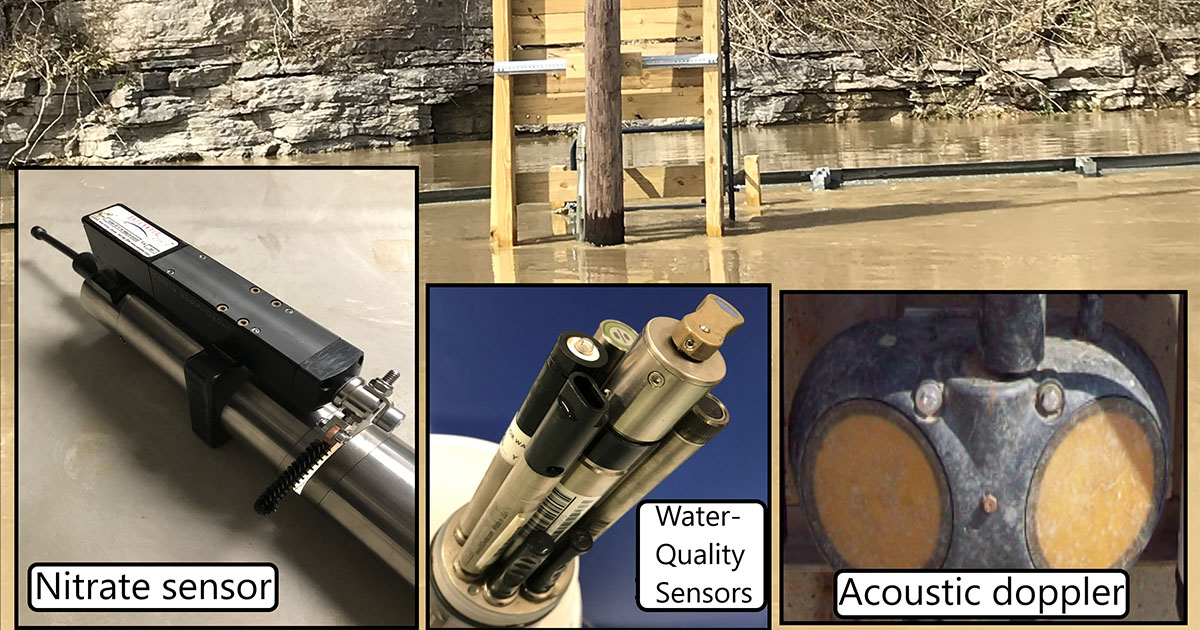Super Gages, the Super Heroes of Water Quality Measurements: Accurate Water Quality Data is Beneficial to Everyone
Posted on Feb 5, 2020With so many super heroes appearing on television and in the movies these days, it’s easy to confuse which ones can fly, or which ones have super human strength, or which ones have both.
Yet, in the world of TV and movies, one doesn’t really have to understand as much about who does what, but rather just enjoy the overall experience.
The real world is a bit different, however; often less interesting, and frequently harder to understand. In realizing that, U.S. Geological Survey (USGS) officials are involved in a project that may appear to be hard to understand on the surface but has superpower implications that affect everyone, even if they don’t know it or fully comprehend it.
The project involves what are called “super gages” and while these devices are far from the heroes we think about in the movies, they have the potential to be super valuable in measuring water quality.
Super gages incorporate real-time streamflow and water-quality measurements with representative in-stream sample collection for laboratory analysis, according to information from the U.S. Geological Survey that oversees the project. Put simply, these devices measure what’s in the water that passes through them and estimates how much of a particular element or nutrient is in the water.

There are different methods used to make the measurements with varying degrees of information that can be gleaned from these varied methods. However, with the advancement of modern technology over the years, the data are more accurate than ever thanks to the use of such instrumentation as the super gages.
Understanding the data collected through water quality measurements may seem difficult at first, but the information can prove to be invaluable when recognizing what’s in our water supply and what is traveling through to larger waterways.
Because of its importance, the USGS has published multiple documents, available to the public, explaining super gages, what they do, and their importance.
Kentucky Farm Bureau (KFB) First Vice President Eddie Melton, who serves on the Kentucky Water Resources Board, said having the type of information available collected through super gages helps keep the general public informed, and provides a more accurate picture of the conservation efforts Kentucky farmers are conducting.
“We have long touted the stewardship observed by farm families across this state but saying it and proving it are two different things,” he said. “By collecting this valuable data, we can articulate our message in more precise terms.”
Angie Crain, a water quality specialist at the U.S. Geological Survey for the Ohio-Kentucky-Indiana Water Science Center said measurements through the use of super gages can often give a much more accurate reading of just what nutrients are flowing through our waterways.
“A lot of the information on nutrients we have stems from the capabilities we had when we could only collect discrete water-quality samples,” she said .
Additionally, state agencies often have an ambient water quality monitoring network where they collect a sample once a month. The information they get may vary with conditions such as high or low flow of the water, and with the type of method used to collect the sample.
“Many times, it is a grab sample,” said Crain. “USGS collects samples a little different. We collect an entire depth- and width-integrated cross-section sample of the river to get a representative sample concentration .”
And while the technology to take continuous measurements of many of these nutrients being measured has not been developed yet, super gages do have the ability to measure continuous concentrations of nitrates and phosphates that can be used as surrogates for total nitrogen and total phosphorus.
With enhanced measurement abilities, the data from the super gages has shown that the nutrient content coming from Kentucky waterways, especially phosphates, nitrates, and sediments is lower than older data had indicated, and often much lower.
Crain said if there was anything, data-wise, that has been measured through the use of super gages that has surprised her, it is the low amounts of nitrates.
“I guess I'm very surprised at just how really low the concentrations of nitrates really are at our super gages,” she said. “I think the highest concentration I've ever seen was less than three milligrams per liter. So that's good. It's very good.”
To put that into perspective, the EPA’s standard for drinking water is 10 milligrams per liter. Melton said when these kinds of numbers are seen, it’s good news for everyone.
“The data coming from the super gages has proven to be valuable to all citizens and confirms how conscience farmers are when it comes to natural resource stewardship,” he said. “It also allows the agriculture community to firmly dispute much of the negative information related to farming practices and demonstrates our commitment to the very elements that sustain our farms.”
Currently, there are five super gages located around the state in strategic locations to measure what is coming into the state and what is exiting from these monitored waterways. But as with any project, funding is an issue and three of these gages will no longer be used to measure water quality after September of this year without additional funding.
Melton noted how important funding for water projects such, as super gages, is when compiling important information about the environment.
“There is so much misinformation circulated to the public about the dangers agriculture production poses to our environment, and that information is simply not true,” he said. “By obtaining such updated data from these super gages, we are making the case in Kentucky of how conscious our farming community is of our natural resources, of which we depend on daily to make our living. The question is not whether to fund this type of project or not; it is, how can we do without them?”
Comments